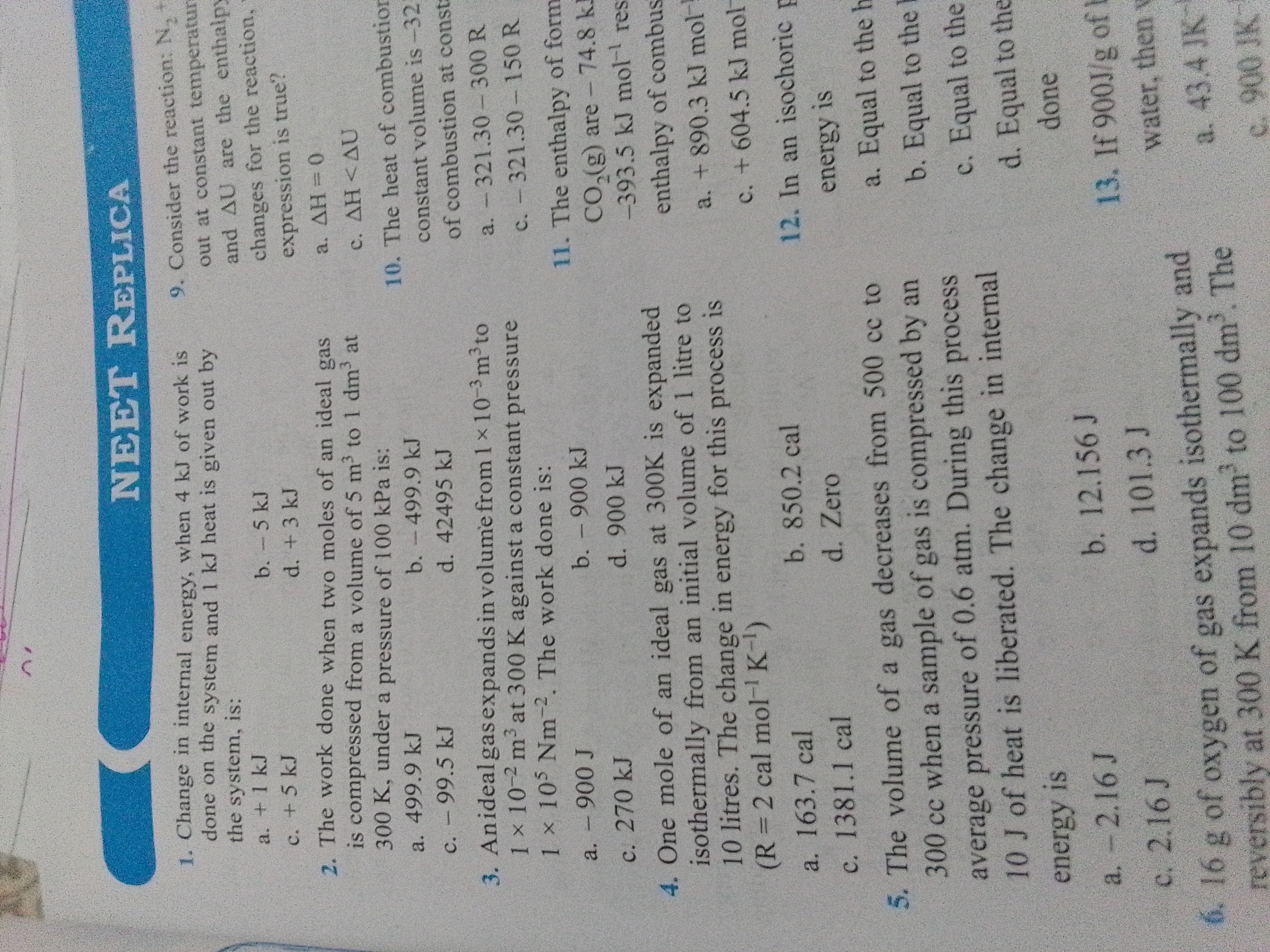1. Change in internal energy, when 4 KJ of work is done the system and 1 KJ heat is given out by the system, is: a. + 5 KJ b. - 5 KJ c. + 1 KJ d. + 4 KJ 2. The work done when... 1. Change in internal energy, when 4 KJ of work is done the system and 1 KJ heat is given out by the system, is: a. + 5 KJ b. - 5 KJ c. + 1 KJ d. + 4 KJ 2. The work done when two moles of an ideal gas expands from 10 dm³ at 300 K under a pressure of 100 kPa is: a. 409.9 kJ b. 4249.5 kJ c. -900.5 kJ d. 990.5 kJ 3. An ideal gas expands in volume from 10 x 10^-3 to 30 x 10^-3 m³ at constant pressure: a. -900 J b. 850.2 cal c. 163.7 cal d. Zero 4. One mole of an ideal gas at 300 K is expanded isothermally from an initial volume of 1 liter to 10 liters. The change in energy for this process is: a. + 800.3 kJ b. 604.5 kJ c. 990.5 kJ d. Zero 5. The volume of gas decreases from 500 cc to 300 cc when a sample of gas is compressed by an average pressure of 0.6 atm. During this process 10 J of heat is liberated. The change in internal energy is: a. 12.156 J b. 101.3 J c. 2.167 J d. 2.16 J.

Understand the Problem
The question is part of an exam set, likely focusing on thermodynamics and the First Law of Thermodynamics, including concepts of internal energy, work done by gases, and heat transfer in chemical processes.
Answer
1. c. +1 KJ
- c. +1 KJ
Answer for screen readers
- c. +1 KJ
More Information
The first law of thermodynamics relates changes in internal energy to heat and work interactions of a system.
Tips
Ensure you interpret the signs for work and heat correctly. Work done on the system is positive, and heat given out is negative.
Sources
AI-generated content may contain errors. Please verify critical information